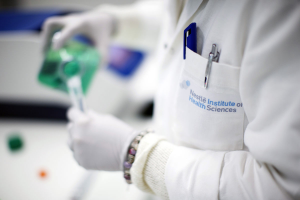After its largest competitor, Hershey, teamed up with 3D Systems to develop 3D printed chocolate and non-chocolate products, Nestle has decided to up the 3D printing ante. The company’s research division, the Nestle Institute of Health Sciences (NIHS), is working on tools to analyze and measure the levels of a number of essential nutrients in a given person’s body. Then, once they’ve tackled the analysis side of the equation, the company imagines using 3D food printing to create meals tailored to the nutritional needs of an individual.

The Iron Man project, headed by the leader of Nestle’s $11 billion nutrition division, Luis Cantarell, will supplement the company’s nutritional products aimed at such illnesses as Alzheimers and genetic disorders that play a role in how the body handles food. Canatrell suggests that the program, which began late last year, will lead to “business propositions that today we cannot imagine,” but points out that fully customized foods may be more than 5 to 10 years away.
A senior scientist at the Children’s Hospital Oakland Research Institute in California told Bloomberg that most of the world is lacking in one or more of the 30 nutrients necessary for a healthy diet, that seven in ten Americans need more vitamin D, and that 45% need more magnesium. These problems are especially prevalent with children, the elderly, and the obese and particularly in the developing world. He says, “Practically everybody is deficient in something.” He adds that, most people know “their cholesterol number, but in the future they’ll know their magnesium number, vitamin D number, and more.” In Ames research, he has demonstrated that a lack of some nutrients can accelerate certain diseases.
As it stands, there is no good way to measure all of the nutritional needs of an individual. A senior associate at the Johns Hopkins Bloomberg School of Public Health, Rolf Klemm, says, “I’m not aware of a ’one-stop shop’ for analyzing and measuring levels of all essential micronutrients. Most of us rely on outdated survey data.” So, right now, it’s most important for the Iron Man team to develop its analytical tools. Though everyone may benefit from knowing their “nutrient profile”, creating one is expensive. Researchers at the University of Minnesota have reported that determining the levels of a specific nutrient can run from $50 to over $200. A complete profile could cost more than $1,000. For that reason NIHS will be working with lab equipment manufacturer, Waters Corp. in Massachusetts, to better sort out the nutrient profiles of individuals and groups.
After tackling this task, the Swiss company will have to move onto the next gargantuan task of actually producing a 3D food printer. At that point, the company imagines adding nutrients, perhaps using powder-filled capsules, to 3D printed foods using a Star Trek-style replicator. Baetge explains, “Out comes your food at the press of a button. If we do this right, it can be the next microwave in your kitchen.”
Source: Bloomberg
Feature Image Source: Vulcan Post



